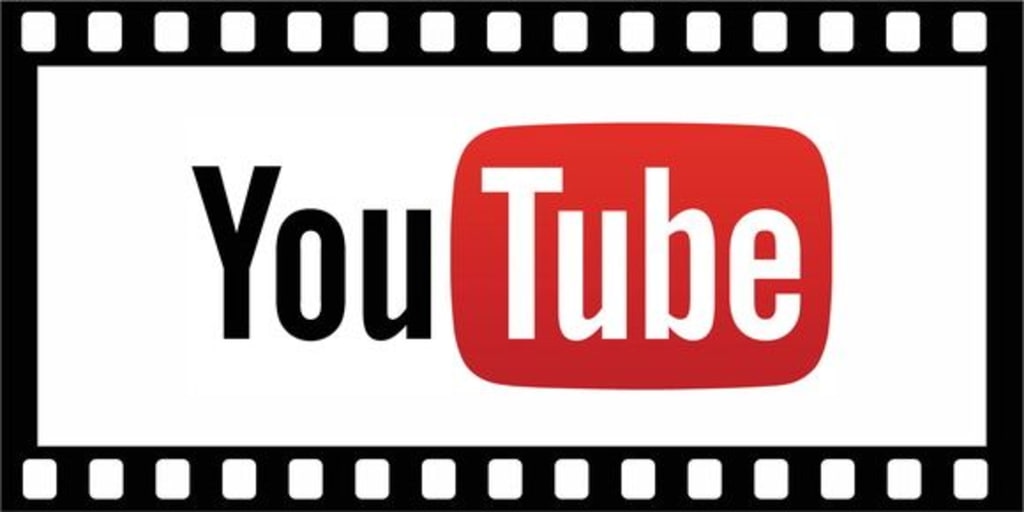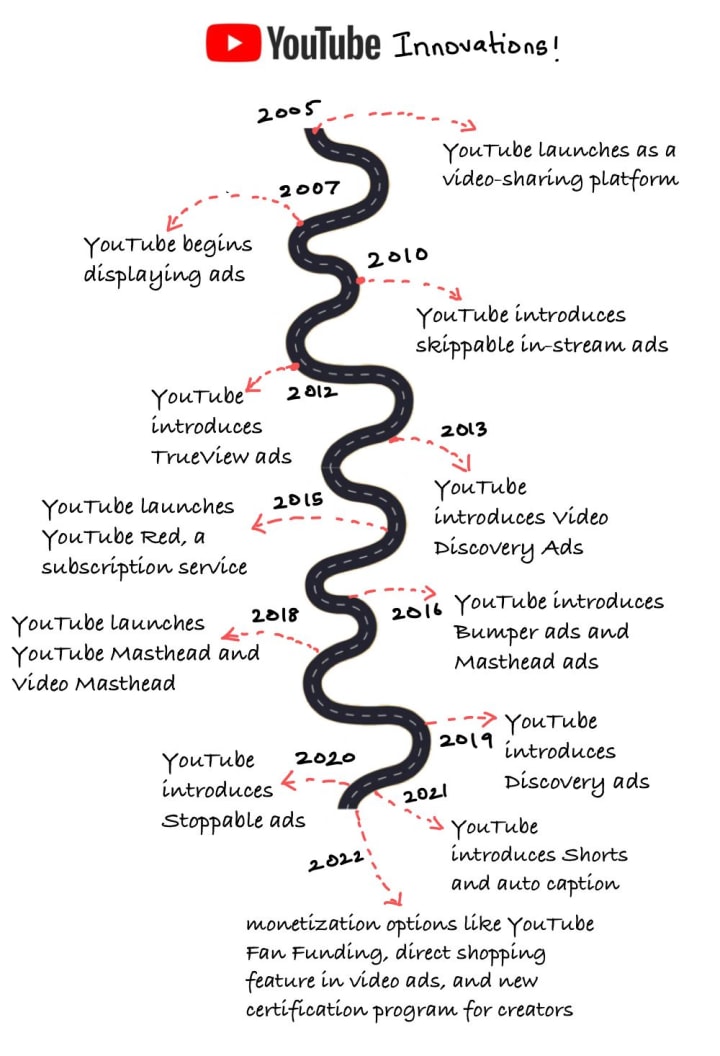The History of YouTube: The Making of a Giant
The story behind the world's largest video-sharing platform

From its humble beginnings as a site for amateur videographers, to a massive platform that attracted billions of viewers and creators from around the world, YouTube became the unparalleled video streaming giant that has revolutionized the way we connect, share and learn, from amateur videos to professional content, giving a voice to every creator to reach a global audience
In this story we will discuss on how 3 former employee of PayPal created the ultimate stage for the world to showcase their talents and voices. How it changed the way people consumed media and a closer look at how it has been used as a platform for e-learning and online education. Finally we see how YouTube has continued to innovate and evolve over the years.
How it all started
February 15, 2005

Chad Hurley (Co-Founded PayPal), Steve Chen (Software Engineer at PayPal) and Jawed Karim (Software Engineer at PayPal) were discussing on the difficulties they were facing in sharing videos that they had shot at a dinner party. To resolve this problem they came up with an idea to create a platform that would make it easy for anyone to share their videos with the world. They wanted to create a website that was simple and easy to use, but also powerful enough to handle large number of users.
Early Days
Within a year after the launch it attracted millions of users and was growing rapidly. The company headquarters was moved from a small office in San Mateo to a large facility in San Bruno, California. Originally the company was called "Tune in Hook Up" before they rebranded as "YouTube"

The 1st video ever Uploaded
The first video ever uploaded to YouTube was "Me at the zoo" shot by one of its co-founder Jawed Karim in April 2005 at San Diego Zoo. As of January 2023, this video has 252 Million views and 12 Million people liked the video.
Initially, YouTube was a platform for amateur videos, where users could share their home videos, personal vlogs, and others types of personal content. However, as it grew in popularity, it began to attract a wider variety of content, including professional and commercial videos.
The platform quickly gained a reputation for being a place to find funny, quirky, and interesting videos, and it became known for its "Viral" videos, which spread rapidly through the internet and gained millions of views. The platform was not yet profitable, but it had significant user base, which attracted the attention of investors.
In the first year, YouTube was still in its infancy, but it had already grown rapidly and had a promising future ahead, this would be the foundation on which it would become the giant it is today.
Rapid Popularity
YouTube experienced rapid growth in its first year, with millions of users visiting the site each month. The platform's popularity was driven by user-friendly interface, wide variety of content, and viral videos.
The companies first major investment came from Sequoia Capital in November 2005, which helped fund its continued growth.
In 2006, Google offered to buy YouTube for $1.65 Billion in stock
The Founder and investors agreed to the acquisition, and YouTube became a subsidiary of Google. This acquisition allowed it to growth, as Google provided it with the necessary resource and infrastructure it needed to scale up its services.
As it's popularity continued to grow, the company introduced new features, such as the ability to upload longer videos and the ability to monetize content through advertising. The platform also began to attract a wider range of content creators, including professional and commercial content producers.
The rapid growth also brought some challenges such as dealing with copyrighted content and moderating comments. But the company was able to navigate these challenges and continued to attract more and more users, eventually becoming one of the most viewed websites on the internet.
Impact on Media Consumption
One of the most significant impacts of YouTube was the way it changed the way people consumed media. Before YouTube video content was primarily distributed through television and DVDS.
With the launch of YouTube, anyone with a video camera or smartphone could upload their videos and share them with the world.
It helped democratize the distribution of video content, making it possible for anyone with a video camera or smartphone t reach a global audience. This democratization of content allowed for a wider range of voice to be heard and made it possible for people to produce their won videos and share them with others.
Role in e-Learning and Education
YouTube became a valuable resource for education and e-learning. With the vast amount of information available on the platform, it has become a go-to place for students and educators alike. The platform offers a wide range of educational and informative videos that are available for free for anyone who wants to learn something new.
From learning a new language to understanding complex scientific concepts, YouTube has a wider range of videos that cater to different learning styles.
Additionally, It has also been used as a platform for distance learning and online education. For example, MOOCs(Massive Open Online Courses) has been offered through YouTube, allowing thousands of students to take online classes for free.
Continued Innovation
Since its launch, YouTube has continued to innovate and evolve in order to better serve its user and content creators.
Below are the list of innovation of YouTube from 2005 till 2022

Current Statistics
YouTube is now one of the largest and most popular websites in the world, with over 2 billion monthly active users. It has a global reach with users from every country in the world.
In terms of engagement, users spend an average of 40 minutes per sessions on the platform with users watching over a billion hours of video every single day. It is available in over 100 countries and in 80 different languages.
In terms of revenue it generates billions of dollars in advertising reverue each year. YouTube also generates revenue through its paid subscription service, YouTube Red, and its TV streaming services.
Conclusion
To conclude, YouTube has been a game changer in the world of online media and its impact on the internet and popular culture can't be understated. It has become a cultural phenomenon and an integral part of the internet and with the platform continuously innovating and adapting to the ever-changing digital landscape, it is sure to remain a dominant force in the world of online video streaming for many years to come.
Thank You so much for reading!
About the Creator
Balaji Devadoss
Welcome, I'm an inquisitive mind exploring different subjects and bringing them to you in an engaging way. Please Like and subscribe for valuable insights and perspectives, it will help and motivate me to continue.
Enjoyed the story? Support the Creator.
Subscribe for free to receive all their stories in your feed. You could also pledge your support or give them a one-off tip, letting them know you appreciate their work.






Comments
There are no comments for this story
Be the first to respond and start the conversation.